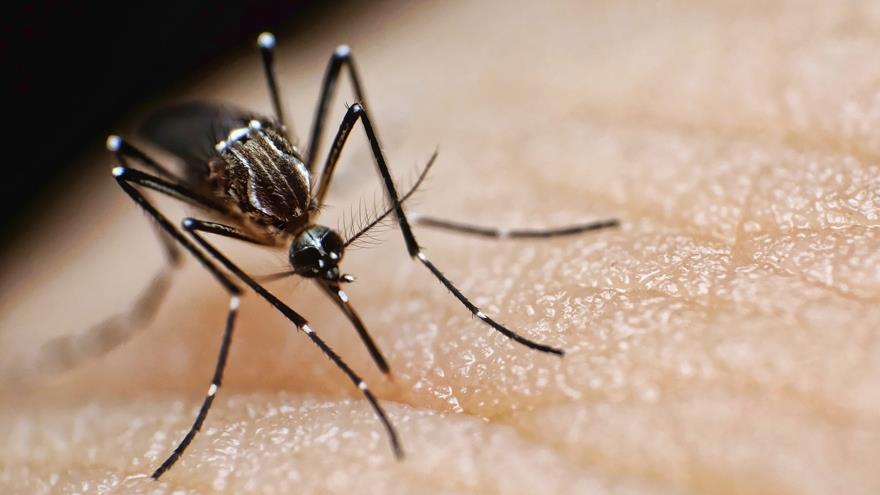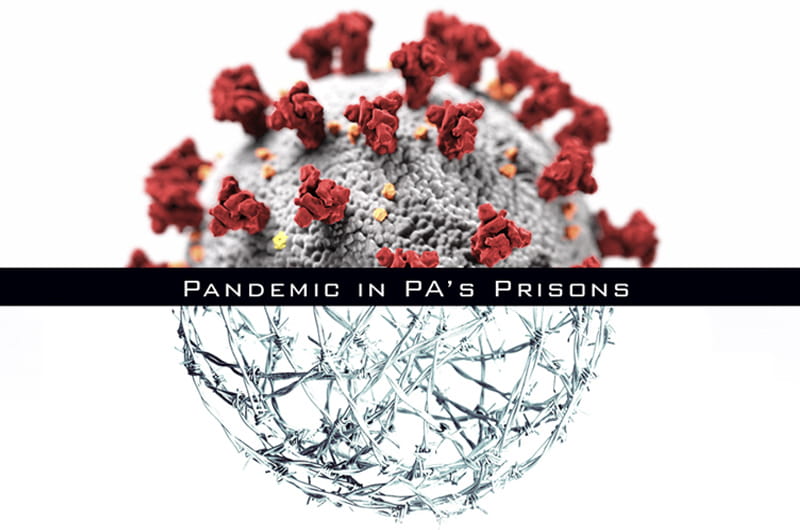New Report: Pandemic in PA’s Prisons Warns of a Looming Public Health Crisis
 By Emily Storz
By Emily Storz

- Mosquitoes' Bloodsucking Tubes Could Enable High-Definition 3D Printing
- Drexel Selects New, World-Class Life Sciences Building at 3201 Cuthbert Street for Medical Research Operations
- Breakthrough on Gene Therapy for Hereditary Spastic Paraplegia
- Drexel Environmental Collaboratory Releases Cross-Sector Findings on Severe Weather Recovery Challenges

Jails and prisons are hotspots for new cases of COVID-19 and as of June 22, over 570 incarcerated people in the United States and more than 50 corrections personnel have died from the virus. The spread of the virus in Pennsylvania’s correctional facilities is particularly likely and dangerous due to a confluence of systemic factors, which are documented in a recently released report, from legal scholars in the Andy and Gwen Stern Community Lawyering Clinic at Drexel University and the Amistad Law Project, titled Pandemic in PA’s Prisons.
The report characterizes the state’s mitigation response for coronavirus in its correctional facilities as one that is indicative of a public safety crisis, when it’s actually a looming public health crisis. Some of its current initiatives, like operating under a state-wide lockdown, limiting access to masks and disinfectant, and hesitancy to reduce its high-risk elderly population, run counter to recommendations from the Centers for Disease Control and Prevention guidelines to stifle the spread of the coronavirus and further compromises the physical and mental wellbeing of prisoners.
Researchers found that without significant measures, like the release of the most vulnerable prisoners — most of whom do not present any risk to public safety, according to the report, the toll of COVID-19 in Pennsylvania’s prisons could be catastrophic.
To protect both incarcerated and non-incarcerated communities, the report suggests that Gov. Tom Wolf should expand the Reprieve of Sentence of Incarceration Program to reduce the population of correctional facilities, so prisons can better abide by the CDC’s health guidelines.
One of the lead authors Rachel E. Lopez, JD, an associate professor of law in Drexel’s Thomas R. Kline School of Law and director of the clinic said the state needs to change its prison response strategy to reflect what is really a public health crisis.
“Prisoners are experiencing one of the longest lockdowns in state history,” explains Lopez. Typically, a lockdown is used as a form of punishment – resulting from a threat to public safety that justifies prisoners being confined. “In this case, they are trying to use the lockdown to stop the spread of the virus – but it actually increases each prisoner’s contact with staff.”
The report points out a number of COVID-19 risk factors in PA’s prisons and jails, including:
A large population of elderly prisoners
As of December 2019, the Department of Corrections (PA DOC) counted 10,697 prisoners over the age of 50 – a number that represents 23.3% of the total prison population. The sheer number of immunocompromised and elderly among PA’s prison population, means its correctional facilities face an increased risk of severe illness, and even death, from the virus.
The authors suggest this high number is likely due to PA’s wide-spread use of mandatory sentences of life without parole (LWOP), which means that individuals with this sentence have no possibility of release, even in their old age.
“One in 10 individuals serving an LWOP sentence in this country are incarcerated in Pennsylvania, with the state holding more individuals on LWOP than any other state except Florida,” said Lopez. “These individuals will grow old in prison; many already are geriatric. The vast majority pose minimal or no threat to society, as is easy to see by looking at decades worth of prison records documenting their behavior behind bars – but they don’t qualify for release under Wolf’s current reprieve program.”
Already, the Pennsylvania Department of Corrections has three long-term care units and estimates that it spends $3.2 million per month to medicate its aging population. The federal government estimates that it costs approximately $881 million to care for the elderly in their custody.
A reprieve program insufficient for reducing the prison population
On April 10, 2020, Gov. Wolf issued an executive order directing the PA DOC to establish a Reprieve of Sentence of Incarceration Program. The program was meant to pave the way for release of up to 1,800 individuals, but, as of May 12, 2020, less than 200 prisoners had been granted reprieve. It’s likely this number is so low, because the program has a limited reach.
Reprieve is only available to two categories of individuals: 1) those who are at high risk of complications from the virus and eligible for release within the next year and 2) anyone who is within nine months of being eligible for release.
Although the program was born to safeguard those who are particularly vulnerable to COVID-19 due to their age – Wolf’s order, as it is written, excludes elderly LWOP prisoners, which account for a quarter of the elderly population currently detained in Pennsylvania. Imprisoning these individuals poses more of a risk to public health than it does to public safety, the authors suggest, because criminality has been shown to decline with age and the elderly tend to “age out” of crime.
Roadblocks to basic preventative measures
In addition to overcrowding making safe physical distancing impossible, in prison it is often difficult to follow basic hygiene recommendations. Many prisoners report that they are unable to keep sanitizer, which is considered contraband due to its alcohol content, and that they have not been provided with an appropriate number of masks.
Moreover, because Pennsylvania imprisons such a high number of at-risk individuals, following the CDC’s recommended measures alone are likely not enough to prevent prisons from turning into massive breeding grounds for COVID-19. If an extensive outbreak occurs in the state’s prisons when the second wave of the virus hits, the existing medical services in these facilities will be overwhelmed with all of those who become sick. These individuals will be transferred to other hospitals in the community that could already be approaching or exceeding their capacity.
The report recommends that Gov. Wolf works with the PA DOC to identify those most vulnerable to the virus and to fast track their release. The authors specifically suggest use of emergency powers under 35 Pa.C.S. § 7301(f) to direct the PA DOC to identify all of those currently incarcerated who are vulnerable to the virus and do not pose a risk to public safety and recommend them for reprieve.
According to the report, if these steps are not taken, it is very likely that Pennsylvania’s correctional facilities, their surrounding communities, and the state as a whole will continue to face an “uncontrolled, unflattened curve” regardless of the futile steps taken by those inside to stave off COVID-19. Researchers conclude the report with an important word of caution from an individual incarcerated at SCI Huntington:
“There is another wave of this virus coming. Things could have been much worse here and we may not be so lucky in the future.”
Drexel News is produced by
University Marketing and Communications.